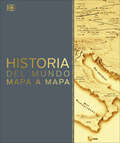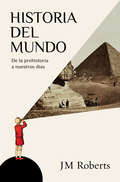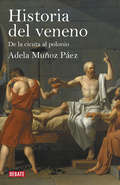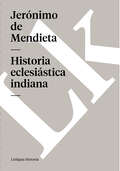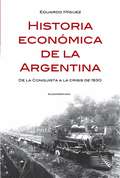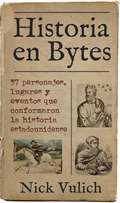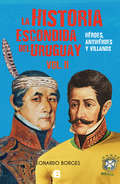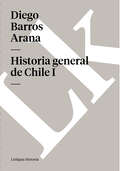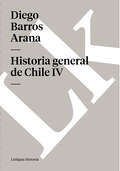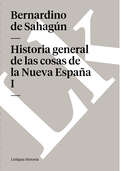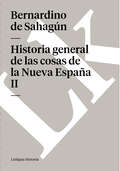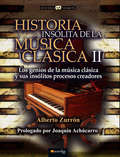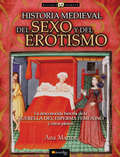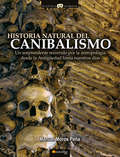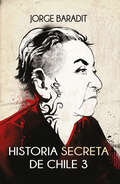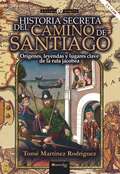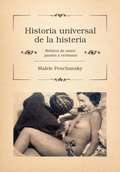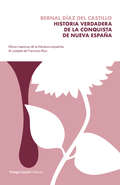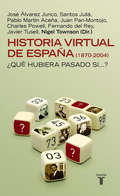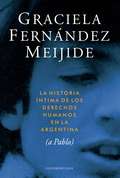- Table View
- List View
Historia del mundo mapa a mapa (DK History Map by Map)
by DKLos mapas no solo nos muestran adónde ir, sino también dónde hemos estado. Si estás interesado en descubrir todos los detalles de la historia mundial con descripciones geográficas de cada época, ¡este libro es para ti!La historia sería incomprensible sin mapas. Por eso, esta impresionante obra recopila 140 mapas que plasman los acontecimientos más importantes de la historia, tal y como se desarrollaron, y con todos los detalles. Profundiza e la revolución científica, la independencia de América del Sur, el auge y la caída de Napoleón, el colapso del comunismo, la formación de la Unión Europea ¡y en muchos más episodios de la historia universal!- Incluye un total de 140 mapas acompañados de explicaciones claras y sencillas.- Con texto fácil de leer para una mejor comprensión de los acontecimientos.- Lleno de imágenes reveladoras, datos interesantes y líneas temporales.Observa el apasionante desarrollo de la historia y descubre las guerras, los altibajos de los imperios, las fuerzas políticas, los movimientos sociales y los acontecimientos clave (humanos o naturales) que han moldeado nuestro mundo a lo largo de los siglos en esta nueva edición de Historia del mundo mapa a mapa. El regalo perfecto para amantes de los mapas y estudiantes de historia de todas las edades.Explore the history of the world in unprecedented detail with this ultimate guide to history throughout the ages. Maps don't just show us where to go, but also where we've been. If you're interested in finding out more about the biggest events in world history, then this book all about history of the world is perfect for you!This stunning history book for adults starts with the evolution and migration of our oldest ancestors out of Africa. You can then look up maps about the Greece and Persian War, the Mongol Conquests, Medieval Europe's trade routes, and the rise of the Ottomans. Explore maps about the colonisation of North America, the scientific revolution, Napoleon's advances, and Britain's control of India. Then uncover the history of later centuries, such as the Age of Imperialism, the American Civil War, industrialised Europe and the transformation of Japan.Journey into past like never before as you uncover:- Easy-to-read text panels for a deeper understanding of history.- A total of 140 maps alongside stunning pictures and informative timelines.- Storytelling maps to bring history to life- Published in association with the Smithsonian Institution in the USA.Bursting with striking illustrations and full of fascinating detail, this history book is the ultimate gift for map lovers, history enthusiasts of all ages and those who enjoy visiting museums and other historical sites, whether as a present for dad, or handy reference guide for any other history lover in your life! History of the World Map by Map aims to help you gain a strong understanding of some of the forces and movements across continents that have shaped our world!
Historia del mundo: De la prehistoria a nuestros días
by J.M. RobertsLa mejor historia del mundo en un solo volumen: una exhaustiva crónica de la humanidad desde sus orígenes en la sabana africana al mundo surgido de las cenizas de las torres gemelas La magna Historia del mundo de J.M. Roberts es un ejercicio extraordinario de comprensión y síntesis, en el que el prestigioso historiador británico recorre la historia universal. Un iluminador relato tejido con maestría y rigor que persigue los principales procesos históricos sin dejar a un lado el arte, las religiones, la economía o los avances científicos para ponerlos en relación y así desvelar el legado que ha sedimentado en la configuración del mundo que vivimos. Con su maestría para la narración histórica, nos cuenta el origen de las civilizaciones en Mesopotamia, el Antiguo Egipto, India, China, África y América del Sur; nos explica el Imperio romano, la explosiva llegada del islam, el auge y caída del dominio samurái en Japón, losreinos medievales del África subsahariana, las conquistas mongolas, la independencia de EEUU, la Revolución francesa, los imperios coloniales, las guerras mundiales o la caída de la URSS. Escrito con vivacidad y firmeza, esta Historia del mundo ofrece la mejor y más legible historia universal, por primera vez en un solo volumen.
Historia del rey transparente
by Rosa MonteroLeola tiene quince años y un novio que se llama Jacques. Trabaja el campo con su padre y su hermano. Vasallos de un señor feudal francés, que a la vez es vasallo del Rey de Aragón, sufren las consecuencias de las continuas guerras y desolaciones, y llevan una vida mísera. Son como animales domésticos de los "hombres de hierro", esos caballeros voraces y brutales que riegan con su sangre los campos que ellos aran. Un día, el amo reclama a todos los hombres disponibles para la batalla y Leola se queda sola. Es entonces, ante la rabia de la injusticia, cuando toma una insólita decisión: disfrazarse con la armadura de un caballero para protegerse de la violencia que la rodea. ¿Cómo podrá sobrevivir y ocultar el engaño de hacerse pasar por un hombre? Afortunadamente, recibirá la ayuda de otros seres como ella, desplazados y heridos en lo más profundo del alma: un guerrero desposeído de sus bienes que vaga de un lado a otro, un maestro en el arte de luchar que le enseña con dureza y eficacia a defenderse y atacar, y sobre todo Nyneve, compañera de armas que dice ser bruja y haber conocido al mago Merlín y al Rey Arturo. Ella le enseña a salir de la ingenuidad y la incultura en la que vive y le hace partícipe de los mitos y leyendas que alimentan la fantasía medieval. En el horizonte siempre está Avalon, la isla en la que sólo viven mujeres, donde no existe la muerte y siempre es primavera, gobernada por una reina extraordinariamente sabia y hermosa. Si es triste ser mujer en un mundo violento, Avalon ejerce de talismán para no rendirse, para confiar en el amanecer de un mundo mejor. En sus andanzas por los burgos y los campos de Francia, Leola se topa con un enigma trágico: trovadores, muchachas o vecinos inician el relato de la historia del Rey Transparente y caen fulminados tras unas pocas frases. Nyneve, que parece estar al tanto del enigma, reacciona siempre con furia ante la sola mención del nombre de ese rey misterioso. El acertijo sólo lo conocerá el lector en las últimas páginas: se trata, en realidad, de una fábula moral que resume la filosofía de toda la novela.
Historia del veneno
by Adela Muñoz PáezLa fascinación del ser humano por los venenos se remonta al principio de los tiempos. Ya en el antiguo Egipto y en el mundo grecorromano, los tósigos se convirtieron en un arma de poder. En Roma fueron muchos los emperadores que alcanzaron la gloria gracias a ellos: Nerón mató a su madre, Agripina la Menor, quien a su vez había asesinado al emperador Claudio para conseguir la corona de su hijo. También en la Italia renacentista, y en la Francia de Luis XIV, las pócimas causaron estragos, y reyes, cortesanos y plebeyos perdieron la vida bajo sus efectos.Cicuta, arsénico, cianuro, talio, polonio? Adela Muñoz realiza un insólito recorrido por los momentos más relevantes de la historia a partir de envenenamientos célebres, y nos descubre la composición de los venenos que acabaron con la vida de personajes ilustres como Sócrates, Cleopatra, el emperador Claudio, Rasputin o Adolf Hitler. Una fascinante historia desde la cicuta de la Antigüedad al polonio de nuestros días.
Historia eclesiástica indiana
by Jerónimo De MendietaLa historia eclesiástica indiana chronicles the evangelization of Mexico. The political powers of the time prevented its publication due to Mendieta's views on colonization of the New World and thus the text was not made public until 1870. Although paternalistic, Mendieta complains of the excessive desire for wealth that lies behind Christian efforts and certain conquerors' aims. He also traces the inaccuracies of the idyllic vision of Aboriginal life before the arrival of the Spaniards.
Historia económica de la Argentina: De la conquista a la crisis de 1930
by Eduardo MíguezEste libro es un intento de reconstruir y explicar los procesos quemediaron entre aquella gran expectativa económica de comienzos del sigloXVI, los logros de la Argentina de comienzos del siglo XX y su crisisposterior. Los primeros navegantes españoles arribados a estas tierras, llenos deesperanzas, denominaron a su boca de entrada Río de la Plata. Lejos deestas expectativas halagüeñas, los siglos siguientes mostrarían un lentodesarrollo. Pero hacia fines del siglo XVIII y comienzos del XIX, laeconomía del Atlántico austral comienza un modesto pero sostenidocrecimiento, que se aceleraría en las décadas siguientes.A casi cuatrocientos años de la llegada de los primeros conquistadores,y cien años después de la independencia, cientos de miles de europeosarribaban al puerto de Buenos Aires, atraídos por una economía en plenaexpansión. Entonces, finalmente, el futuro sí parecía promisorio. En losveinte años siguientes, sin embargo, comienzan a hacerse evidentes lasdificultades para consolidar una economía próspera.Este libro abarca cuatro grandes etapas: la colonia, la dificultosaformación de la Nación, la gran expansión finisecular, y laestabilización de la economía que sería comprometida por la crisis de1929. En este largo recorrido se puede ver hasta qué punto las claves delos problemas que aquejaron a la moderna economía argentina puedendetectarse en su largo proceso formativo.
Historia en Bytes. 37 personajes, lugares y eventos que conformaron la historia estadounidense
by Nick Vulich Yussef Chaib Abderrahman y Elena Pérez GalianoLa presente obra consiste en una sucinta colección de bytes históricos que, en algunos pasajes, pone en tela de juicio leyendas urbanas relacionados con la historia de los Estados Unidos; en otros, ilustra algunos sucesos históricos poco notorios y ofrece un enfoque diferente sobre algunos hechos conocidos.
Historia en meme: (el libro)
by Guillermo Pérez RomeroLa historia universal contada de manera fácil y divertida, ¡y con memes! ¿En la Prehistoria solo la mujer recolectaba? ¿Las pirámides de Egipto las construyeron únicamente los esclavos? ¿Cómo realmente fue la Conquista de América? ¿Qué tuvo de especial la censura cinematográfica con Franco? ¿Cómo fue la noche de bodas de Carlos III? ¿De dónde viene la tradición de «poner el Belén»? ¿Cuál es el origen histórico de las expresiones «poner los cuernos» o «acabar con el rosario de la Aurora»?
Historia escondida del Uruguay vol. II: Héroes, antihéroes y villanos
by Leonardo Borges¿Quiénes son los héroes de nuestra historia? ¿Quiénes son los villanos? ¿Por qué son esos los héroes y por qué los otros son los villanos? ¿Quién los señala y tipifica como tales? En Historia escondida del Uruguay vol. II es el turno de abordar uno de los mitos intocables de cualquier historia nacional: el mito de los héroes. Pero este mito, en nuestro país, se agiganta de forma colosal, en relación directa con nuestra necesidad de gloria. Si existe una máquina creadora de héroes, esa es la historia nacional. Y si crea héroes, debe crear villanos. Y si existe el héroe, en todas sus acepciones, si existen el villano y sus tantas variantes, entonces también debería existir en los avatares de la historia aquel que es héroe, pero que no es héroe: el antihéroe. Héroes, antihéroes y villanos serán nuestra santísima trinidad a la hora de analizar nuestra historia, su derrotero y, sobre todo, los pretendidos protagonistas de esos sucesos que han sido colocados, ex profeso, en un relato bien armado, un andamiaje moralmente aceptable y políticamente correcto que nos hace analizar la historia de la misma forma que un exquisito partido de fútbol o una pelea callejera.
Historia general de Chile I
by Diego Barros AranaWritten by one of the greatest scholars of Latin America La historia general de Chile recounts the nation's entire history from prehistory to 1830.
Historia general de Chile IV
by Diego Barros AranaWritten by one of the greatest scholars of Latin America, La Historia general de Chile recounts the nation's entire history from prehistory to 1830.
Historia general de las cosas de la Nueva España I
by Bernardino De SahagúnLa historia general de las cosas de la nueva España reúne los doce libros editados en México por el monje franciscano Bernardino de Sahagún entre 1540 y 1590 a partir de entrevistas con informantes indígenas en Tlatelolco, Texcoco y Tenochtitlan. El mejor manuscrito que se conserva de la obra es el denominado Códice florentino, alojado en los archivos de la Biblioteca Laurenciana de Florencia, una copia de los textos cuya fuente original se perdió, posiblemente destruida por las autoridades españolas. A lo largo de los doce libros que integran la obra se abordan distintas cuestiones de la cultura de los nativos, desde las creencias religiosas, la astronomía y la adivinación, las oraciones y las formas retóricas típicas de los discursos tradicionales en lengua náhuatl, hasta los conocimientos sobre el sol, la luna y las estrellas, o el comercio, la historia, la sociedad azteca y la conquista española.Al cabo de casi medio milenio, la obra de Sahagún no solo sigue siendo una de las principales fuentes de información sobre la vida de los aztecas antes del «descubrimiento», sino el primer intento de practicar el complicado ejercicio etnográfico de «ponerse en el lugar del otro» procurando asumir la lógica interna de una mentalidad ajena —y, en parte, extrañándose de la propia— para comprender el mundo donde viven otros hombres.
Historia general de las cosas de la Nueva España II
by Bernardino De SahagúnLa historia general de las cosas de la nueva España reúne los doce libros editados en México por el monje franciscano Bernardino de Sahagún entre 1540 y 1590 a partir de entrevistas con informantes indígenas en Tlatelolco, Texcoco y Tenochtitlan. El mejor manuscrito que se conserva de la obra es el denominado Códice florentino, alojado en los archivos de la Biblioteca Laurenciana de Florencia, una copia de los textos cuya fuente original se perdió, posiblemente destruida por las autoridades españolas. A lo largo de los doce libros que integran la obra se abordan distintas cuestiones de la cultura de los nativos, desde las creencias religiosas, la astronomía y la adivinación, las oraciones y las formas retóricas típicas de los discursos tradicionales en lengua náhuatl, hasta los conocimientos sobre el sol, la luna y las estrellas, o el comercio, la historia, la sociedad azteca y la conquista española.Al cabo de casi medio milenio, la obra de Sahagún no solo sigue siendo una de las principales fuentes de información sobre la vida de los aztecas antes deldescubrimiento», sino el primer intento de practicar el complicado ejercicio etnográfico deponerse en el lugar del otro» procurando asumir la lógica interna de una mentalidad ajena —y, en parte, extrañándose de la propia— para comprender el mundo donde viven otros hombres.
Historia insólita de la música clásica II (Historia Incógnita)
by Alberto ZurrónConozca todos secretos del espíritu creador de los grandes maestros, las anécdotas y circunstancias insospechadas que han rodeado el insólito milagro de la creación genial de las más famosas obras de la música clásica. Los demonios, las circunstancias de pobreza y necesidad, las perversiones y las obsesiones de las que nacieron las más sublimes piezas de Beethoven, Mahler, Mozart, Debussy, Chaikovski, Strauss, Chopin, Puccini, Bizet. Una obra que le descubrirá el increíble proceso creador de estos genios.
Historia insólita de la música clásica: La asombrosa vida de los artistas más extraordinarios (Historia Incógnita)
by Alberto ZurrónConozca la vida íntima, anécdotas y peripecias singulares que vivieron los compositores e intérpretes más extraordinarios de la música clásica. Beethoven, Mahler, Mozart, Debussy, Chaikovski, Strauss, Chopin, Puccini, Bizet. Una obra llena de ingenio y datos sorprendentes que le descubrirá las facetas más desconocidas de la historia de la música. Un insólito acopio de risas, asombros y descubrimientos musicales. Si pensaba que los músicos clásicos son aburridos con este libro no dejará de sorprenderle hasta qué punto estaba equivocado. El mundo de la música está lleno de héroes y antihéroes, de batallas cotidianas sin más escudo que el talento, de más puñaladas que caricias, de más despropósitos que propósitos. Ellos eran humanos y ocultaron ese carácter a su música, pero esos dioses se ponían las zapatillas al llegar a casa y cuando no eran la compañía más insoportable del mundo eran la más jocosa. Un lector podrá tararear una pieza porque le suene, pero nunca podrá experimentar del todo la intensidad de la música si no conoce al mago que está detrás, fabricándola mientras un dolor de muelas le consumía o venía de enterrar a dos de sus hijos. Historia insólita de los genios de la música le acercará a estos hombres por encima de su música, extraerá de estos sublimes desvergonzados y descarados (pero ángeles, sobre todo) el origen y el destino de todos sus males, de todas sus aberraciones, de sus manías y sus originalidades. Una obra que le ayudará a entender a esos seres maravillosos que creía conocer pero sobre los que estaba equivocado.
Historia medieval del sexo y del erotismo (Historia Incógnita)
by Ana Martos RubioLa obra no sólo abarca la querella que durante casi siete siglos enfrentó a los médicos seguidores de unos u otros autores, acerca de si la mujer eyacula semen durante el orgasmo y si ese semen es necesario para la procreación, sino también el mundo erótico y amatorio de la época medieval.
Historia mundial de nuestros grandes errores
by BullymagnetsLas metidas de pata más vergonzosas de toda la historia. Tus historiadores favoritos de YouTube, ahora en un libro. Cuando hacemos el recuento de la historia de la humanidad recordamos con orgullo las grandes hazañas, las conquistas, los descubrimientos y las victorias, pero en realidad por cada victoria hay un fracaso y por cada acierto, una infinidad de errores. Por cientos de años los seres humanos hemos metido la pata y, aunque no nos guste admitirlo, nuestra historia también está determinada por todos esos fracasos que nos hacen encoger de hombros. Este libro trata sobre esos momentos en los que un error, ya sea grande o pequeño, ha sido determinante para la historia y sus protagonistas. De distintas naturalezas, los errores han estado presentes para recordarle al ser humano su condición falible y, a veces, sin darse cuenta, son esos instantes de confusión, traición, error y debilidad los que han dado forma a nuestra existencia. De lo trágico a lo cómico, lo ridículo y lo inverosímil, en estas páginas se recogen los errores que en cada tiempo y lugar nos hacen llevarnos la mano a la cara y pensar para nuestros adentros: "Cómo es que no se dieron cuenta?"
Historia natural del canibalismo (Historia Incógnita)
by Manuel Moros PeñaComer carne humana es el último tabú de cualquier sociedad que se precie de ser civilizada. De hecho, a lo largo de los siglos, ha sido un argumento esgrimido para justificar la persecución y conquista de otros pueblos. Sin embargo, por sorprendente que parezca, los recientes descubrimientos paleontológicos apoyan la teoría de que los seres humanos hemos sido deborados por semejantes desde que nuestros primeros ancestros caminaban sobre la Tierra.
Historia secreta de Chile 3
by Jorge BaraditEl lado B de la historia de Chile tiene tercera parte, con narraciones aún más sorpresivas y descubrimientos increíbles ¿En la Isla de Pascua hubo una revolución dirigida por una vidente? ¿Es verdad que esclavos africanos pelearon en la Independencia de Chile? ¿Hubo un exorcismo público en Santiago? ¿Cuáles son los misterios que esconde la Antártica? ¿Cuáles son los secretos oscuros detrás de la vida y terrible muerte de José Miguel Carrera? ¿Qué nos han ocultado de nuestro Premio Nobel, Gabriela Mistral? Jorge Baradit, en la tercera parte de Historia secreta de Chile (el fenómeno editorial más importante que ha tenido nuestro país en décadas), nos relata la vida de héroes postergados, pueblos originarios saqueados, minorías reducidas por el poder predominante, para así sacar a la luz una verdad incómoda, que muchos quisieran seguir pasando de alto. La historia de Chile no es de las instituciones, del Estado o de un sector específico, sino nuestra, y necesitamos descubrirla para entender nuestra propia identidad.
Historia secreta del Camino de Santiago (Historia Incógnita)
by Tomé Martínez RodríguezMucho se ha escrito sobre el génesis del Camino de Santiago; también conocido con el apropiado nombre de Ruta de las estrellas, pues su sinuoso trazado parece corresponderse con ese otro camino celeste que nos cubre con su manto de estrellas cada noche y que es conocido como la Vía Láctea.
Historia universal de la histeria: Relatos de amor, pasión y erotismo
by Malele PenchanskyDesde la histérica paradigmática Anna O. hasta la observación de rasgoshistéricos en personajes de nuestros días, Malele Penchansky logra unfresco audaz y provocativo sobre un síntoma que, sostiene, no esprivativo de las mujeres ni tan malo como nos hicieron creer. Después detodo, de la histeria se nutre el juego amoroso. La histeria femenina fue diagnosticada por la medicina occidentalantigua como una enfermedad que provenía de perturbaciones del útero ycuyo tratamiento era conocido como "masaje pélvico", que consistía en laestimulación de la zona de los genitales hasta llegar al orgasmo. Elmismo Freud se interesó especialmente por la histeria y más cerca denuestro tiempo la psicoanalista francesa Diane Chauvelot la caracterizócomo un síntoma social. El origen de la histeria fue cambiando y losigue haciendo.«Historia universal de la histeria» recrea algunas historias atravesadaspor este síntoma: la mirada de la Medusa, la palabra que enamora enSócrates y Alcibíades, el travestismo y la ambigüedad en Juana de Arco,o la seducción masculina del Don Juan.
Historia verdadera de la conquista de la Nueva España: Noticias Biogr�ficas. Verdadera Historia De Los Sucesos De La Conquista De La Nueva-espa�a, Por Bernal D�az Del Castillo. Verdadera Relacion De La Conquista Del Per� Y Provincia Del Cuzco, Por Francisco De Jere...
by Bernal Díaz del CastilloEl descubrimiento y conquista de América fueron acontecimientos cruciales de incalculables consecuencias, aun hoy en vías de resolución. La Historia de la conquista de Nueva España es una crónica portentosa y minuciosa de un testigo directo de aquella empresa descomunal. El brío excepcional del relato, el vigor de la prosa y su infatigable capacidad para evocar hombres, acciones y escenarios le conceden, sin lugar a dudas, un sitio de privilegio en la literatura española. El libro contiene tres grandes bloques temáticos: el descubrimiento de Yucatán por las expediciones de Francisco Hernández de Córdoba y Juan de Grijalva (1517-18); la epopeya propiamente dicha bajo los estandartes de Hernán Cortes (1519-21); y el viaje a Honduras, complementado con una extensa miscelánea de noticias sobre la Nueva España. Cada página es un dechado de prodigiosa intensidad, producto del talento narrativo de Bernal Diaz, de la energía de su estilo y del terrible verismo con que narrala aventura. Nada queda fuera de su crónica en esta edición concentrada en sus mejores capítulos, que se incluyen por entero: ni las vicisitudes y sucesos militares, ni la caracterización de los personajes más relevantes (Cortes, Moctezuma, etc.), ni los sentimientos y experiencias personales de un soldado empeñado en dar exacta y precisa cuenta de los avatares vividos en esa tierra desconocida. Pero quizás la grandeza de esta obra radique en el aliento épico que la anima. A diferencia de otros cronistas, a los que se enfrenta y critica, Bernal Diaz presenta la conquista de México como una empresa común, como la gesta de un colectivo de hombres cuyos aciertos y errores corresponden al pueblo español.
Historia verdadera de la conquista de la Nueva España: Verdadera Historia De Los Sucesos De La Conquista De La Nueva Espa�a, Por El Capit�n Bernal D�az Del Castillo, Uno De Sus Conquistadores
by Bernal Diaz Del Castillo Francisco RicoEl descubrimiento y conquista de América fueron acontecimientos cruciales de incalculables consecuencias, aun hoy en vías de resolución. La Historia de la conquista de Nueva España es una crónica portentosa y minuciosa de un testigo directo de aquella empresa descomunal. El brío excepcional del relato, el vigor de la prosa y su infatigable capacidad para evocar hombres, acciones y escenarios le conceden, sin lugar a dudas, un sitio de privilegio en la literatura española. El libro contiene tres grandes bloques temáticos: el descubrimiento de Yucatán por las expediciones de Francisco Hernández de Córdoba y Juan de Grijalva (1517-18); la epopeya propiamente dicha bajo los estandartes de Hernán Cortes (1519-21); y el viaje a Honduras, complementado con una extensa miscelánea de noticias sobre la Nueva España. Cada página es un dechado de prodigiosa intensidad, producto del talento narrativo de Bernal Diaz, de la energía de su estilo y del terrible verismo con que narra la aventura. Nada queda fuera de su crónica en esta edición concentrada en sus mejores capítulos, que se incluyen por entero: ni las vicisitudes y sucesos militares, ni la caracterización de los personajes más relevantes (Cortes, Moctezuma, etc.), ni los sentimientos y experiencias personales de un soldado empeñado en dar exacta y precisa cuenta de los avatares vividos en esa tierra desconocida. Pero quizás la grandeza de esta obra radique en el aliento épico que la anima. A diferencia de otros cronistas, a los que se enfrenta y critica, Bernal Diaz presenta la conquista de México como una empresa común, como la gesta de un colectivo de hombres cuyos aciertos y errores corresponden al pueblo español.
Historia virtual de España (1870-2004): ¿Qué hubiera pasado si...?
by Nigel TownsonHistoriadores de la talla de José Álvarez Junco, Santos Juliá, Javier Tusell, Nigel Townson, Charles Powell, Pablo Martín Aceña, Juan Pan-Montojo y Fernando del Rey nos describen en Historia virtual de España (1807-2004) una posible Historia de España que no ocurrió, pero que podría haber ocurrido. ¿Qué hubiera pasado si España hubiera llegado a un acuerdo con Estados Unidos antes de la guerra de 1898? ¿Y si Alfonso XIII se hubiera opuesto al intento de golpe de Estado del general Primo de Rivera? ¿Y si Indalecio Prieto se hubiese convertido en presidente del Gobierno en mayo de 1936? ¿Habría estayado la Guerra Civil? ¿Y si España hubiese entrado a la Segunda Guerra Mundial o ETA no hubiese matado a Carrero Blanco? ¿Habría tenido lugar la transición? O, más recientemente, ¿qué hubiera pasado si el gobierno del Partido Popular no hubiera apoyado la guerra de Irak? Este libro ofrece por primera vezla historia contrafáctica de los momentos más impredecibles, inciertos e inquietantes de la Historia contemporánea de España. Con ello, se recupera el pasado como algo vivo, abierto y no predeterminado, a través de una de las formas más estimulantes de reivindicar y revivir la historia.
Historia íntima de los derechos humanos en la Argentina
by Graciela Fernández Meijide"Una lectura indispensable para quien quiere conocer, de primera mano,los antecedentes de nuestra dolorosa historia y cómo se la enfrentó enlos inicios de la democracia." Ricardo Gil Laavedra Quizás una de las circunstancias más atroces por las que pueda transitarel ser humano es ver desaparecer a un hijo tras una puerta que se cierrapara siempre. Resulta casi imposible pensar que esa imagen abandone laretina y el alma de quien presenció una partida de tales característicashacia el horror y el silencio.Graciela Fernández Meijide explica que, gracias a este libro, ha podidodespedirse finalmente de su hijo Pablo, arrancado de su casa por unapatota fuertemente armada en 1976 cuando acababa de cumplir 17 años.Empieza también aquí para ella un largo peregrinar por los organismos deDerechos Humanos cuyo devenir relata minuciosamente. Este libro es unacrónica apasionante de lo que significaron y significan estos Organismosen la vida nacional. El paso de Graciela por la Comisión Nacional por laDesaparición de Personas (Conadep), presidida por Ernesto Sabato,culmina con el Juicio a las Juntas de Comandantes de la dictadura queensombreció la historia argentina desde 1976 hasta 1983. Este relato,sobrio y jurídicamente documentado, no puede faltar entre los libros quesiguen marcando para todas las generaciones los hechos que aquí soncontados por una de sus protagonistas.Magdalena Ruiz Guiñazú
